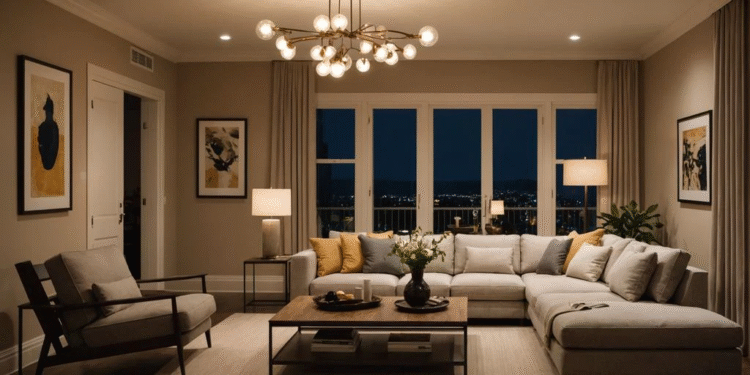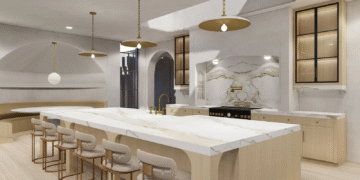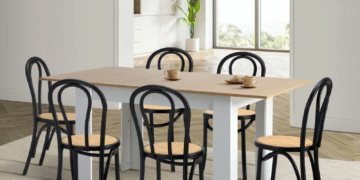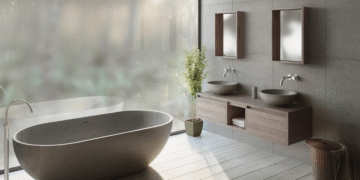Pendant lights have become a popular choice among homeowners and designers for their versatility and aesthetic appeal. These lights not only illuminate a space but also add a stylish accent that can significantly enhance the décor. Whether used over kitchen islands, dining tables, or in hallways, the right pendant lights can transform the look and feel of a room.
Understanding the different types of pendant lights available is crucial to making an informed decision. Essentially, pendant lights come in a variety of shapes, sizes, designs, and materials, allowing them to cater to diverse tastes and interior styles. This variety means there is a perfect pendant light for every space, whether it be a contemporary living area or a traditional kitchen.
Types of Pendant Lights
Pendant lights are remarkably diverse and can be categorised into several types based on their design and functionality. Some of the most common types include mini pendants, multi-light pendants, downlight pendants, and inverted pendants. Mini pendants, for instance, are perfect for providing focused illumination and are often used in multiples to create an impactful look.
Multi-light pendants offer a larger spread of light and are a great choice for rooms requiring more illumination. Downlight pendants direct the light downwards, making them ideal for task lighting over areas like kitchen islands and workspaces. Inverted pendants, on the other hand, direct light upwards and provide ambient lighting, which is well-suited for general room illumination.
Choosing the Right Material and Finish
When selecting pendant lights, it is essential to consider the material and finish as these elements greatly influence both the aesthetics and the functional qualities of the light fixture. Common materials include glass, metal, and fabric, each offering a distinct visual effect and level of light diffusion.
Glass pendants can provide a sleek, modern look and often come in clear, frosted, or coloured varieties. Metal pendants, including those made from brass, copper, or chrome, offer a contemporary or industrial vibe that is currently very fashionable in modern homes. Fabric shades can add a softer touch and are excellent for diffusing softer, more ambient light.
Optimal Placement and Installation Tips
Understanding the proper placement and installation of pendant lights can make a significant difference in their effectiveness and aesthetic appeal. These lights should be hung at a height that provides ample illumination without being intrusive. Generally, pendant lights above countertops or tables should be installed about 30 to 36 inches above the surface to ensure they are at an appropriate height.
Additionally, considering the size of the pendant light in relation to the room is crucial. Oversized pendants can overwhelm a small space, while undersized fixtures might not provide sufficient illumination or visual impact in a larger room. Therefore, a balance must be struck based on the dimensions of the space.
The Role of Pendant Lights in Interior Design
Pendant lights play an integral role in enhancing the interior design of a home. Due to their highly visible nature, they often serve as focal points in a room, drawing the eye and setting the tone for the entire space.
In open-plan living areas, pendant lights can be used to demarcate different zones, such as living, dining, or kitchen areas. They offer a way to express personal style while also providing essential lighting, effectively combining function with aesthetic appeal.
Energy Efficiency Considerations
With growing emphasis on sustainability, choosing energy-efficient lighting options is more important than ever. Pendant lights equipped with LED bulbs not only reduce electricity consumption but also have a longer lifespan compared to traditional incandescent bulbs. This can lead to significant savings on energy bills over time.
In addition, smart pendant lights that are compatible with home automation systems can provide both convenience and added efficiency, allowing homeowners to control lighting levels and schedules from their smartphones or other smart devices.
Customising Pendant Lights to Suit Your Space
Customisation options for pendant lights are vast, allowing homeowners to tailor their lighting to fit specific design themes and functional requirements. Adjustable pendant lights that can be raised or lowered are particularly useful in dynamic spaces that require varying levels of illumination.
Additionally, pendant lights available in an array of colours and styles provide the flexibility to align with existing décor or introduce a new aesthetic element to the space. Personalising pendant lights can be a simple yet effective way to update a room without the need for a complete overhaul.
Conclusion
Pendant lights are not only a practical lighting solution but also a vital component of interior design that contributes to the overall ambience and style of a space. By understanding the various options available and considering factors such as material, placement, and energy efficiency, one can make informed decisions that will enhance both the functionality and aesthetic of their home. Whether in a residential setting or a commercial space, pendant lights offer a versatility that is hard to match, making them a worthwhile investment for anyone looking to elevate their interiors.













